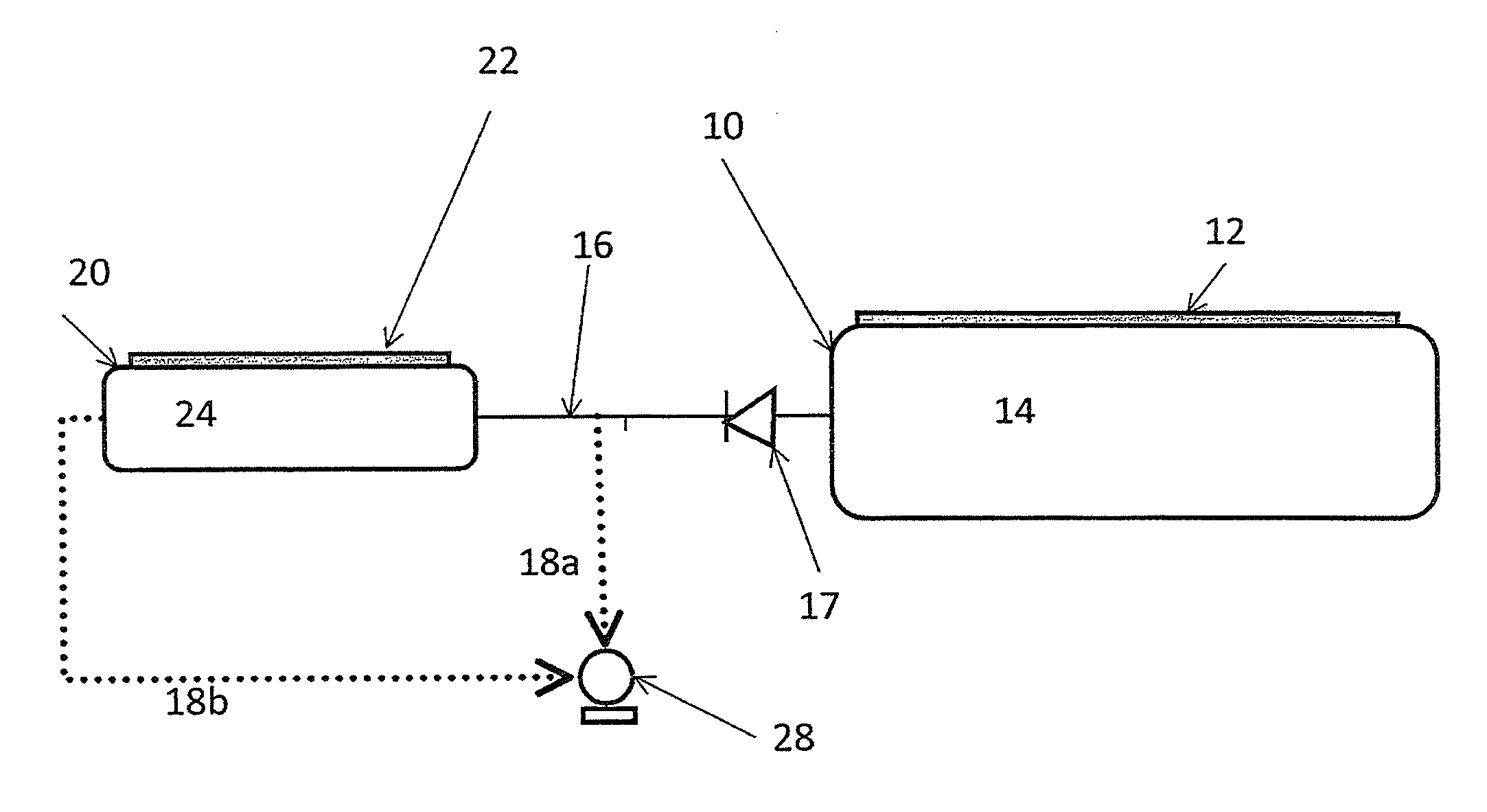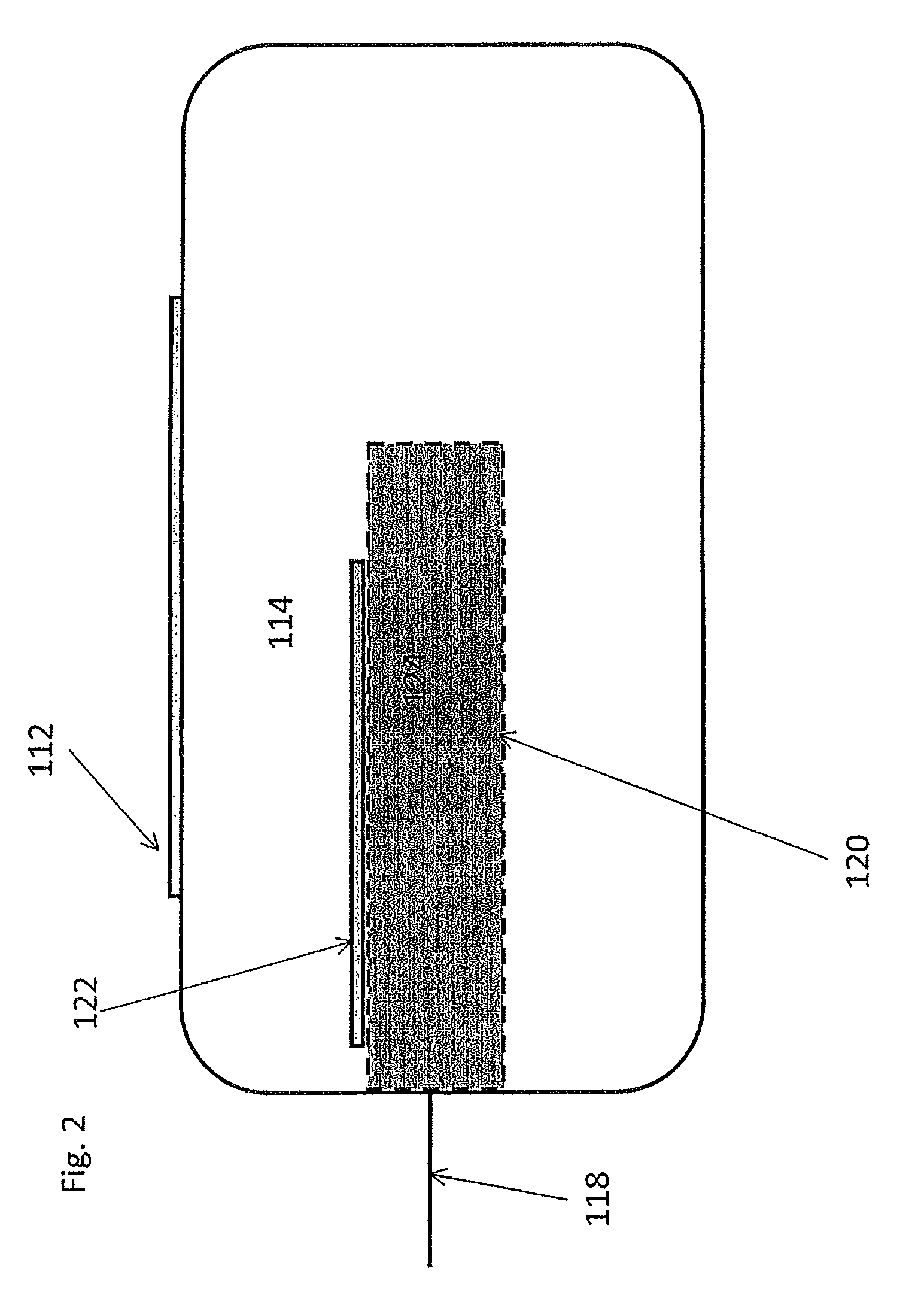Method for storing and delivering ammonia from solid storage materials using a vacuum pump
a technology of solid storage materials and vacuum pumps, which is applied in the direction of exhaust treatment, special packaging, packaging, etc., can solve the problems of inconvenient and indirect ammonia mobile transportation, too hazardous storage of ammonia in the form of pressurized liquid in a vessel, and inability to meet the requirements of ammonia storage, etc., to achieve the effect of high ammonia affinity
- Summary
- Abstract
- Description
- Claims
- Application Information
AI Technical Summary
Benefits of technology
Problems solved by technology
Method used
Image
Examples
example 1
[0065]In an experiment similar to FIG. 1 with a booster containing 100 g of MgCl2 and a main container filled with 5 kg of saturated Sr(NH3)8Cl2, resaturation of the booster was investigated. At room temperature the system pressure was 0.4 bar (absolute). Re-saturation rates (of ammonia absorbing in the depleted MgCl2) between 2-4 g / hour were measured. At 5° C. the re-saturation rate drops to about 1 g / hour.
example 2
[0066]A system similar to FIG. 2 was investigated comprising saturated MgCl2 (i.e. Mg(NH3)6Cl2) in the booster and a main container filled with 5 kg of saturated Sr(NH3)8Cl2. The heating element of the booster has a power of 240 W. Ammonia was pumped from the system with a vacuum pump. Before the experiment was started, the system was in equilibrium at a certain temperature. When the experiment was initiated the pump and booster heating element was switched on and the ammonia flow from the pump was measured. The time-to-dose is the time measured until the ammonia flow exceeds 0.2 g / min via the pump. At system temperatures above 10° C. the time-to-dose was essentially zero, since the main container can immediately deliver more than 0.2 g / min. At lower temperature the time-to-dose gradually increased until 4 minutes at −25° C. When the pump is not modified, the time-to-dose from the booster-enhanced system is mainly determined by a combination of the mass of material in the booster an...
PUM
| Property | Measurement | Unit |
|---|---|---|
| temperature | aaaaa | aaaaa |
| temperatures | aaaaa | aaaaa |
| equilibrium pressure | aaaaa | aaaaa |
Abstract
Description
Claims
Application Information
 Login to View More
Login to View More - R&D
- Intellectual Property
- Life Sciences
- Materials
- Tech Scout
- Unparalleled Data Quality
- Higher Quality Content
- 60% Fewer Hallucinations
Browse by: Latest US Patents, China's latest patents, Technical Efficacy Thesaurus, Application Domain, Technology Topic, Popular Technical Reports.
© 2025 PatSnap. All rights reserved.Legal|Privacy policy|Modern Slavery Act Transparency Statement|Sitemap|About US| Contact US: help@patsnap.com



